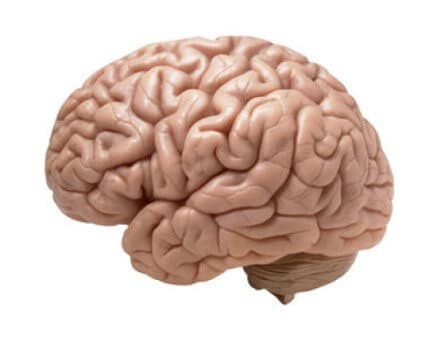A new study published in the current issue of Biological Psychiatry suggests that schizophrenia is associated with reductions in the complexity of the cortical folding pattern that may reflect deficits in the structural connections between brain regions.
“The cortical folding pattern itself may not be so important, but the disturbances in connections between brain regions implicated by the changes in cortical folding could provide critical clues to deficits in the integrity of brain circuits that contribute to symptoms and functional impairment in schizophrenia,” commented Dr. John Krystal, Editor of Biological Psychiatry.
The study, conducted by an international group of scientists, measured cortical folding using regional local gyrification index values in patients with psychotic disorders, their first-degree relatives, and healthy controls. The patient group included individuals with diagnoses of schizophrenia, schizoaffective disorder, and bipolar disorder.
Local gyrification index is an advanced metric that quantifies cortical folding using a 3-dimensional approach.
Senior author Dr. Matcheri Keshavan, a Professor at Harvard Medical School, describes their results: “The main finding was that psychotic disorders are characterized by reduced folding of the cortex in key brain regions such as the cingulate cortex (a brain region involved in thinking and emotions). Reductions in cortical folding may reflect alterations in brain development early in life in these disorders. We also observed these alterations in first degree relatives at high risk for psychotic illnesses.”
With imaging data from 931 participants, this study is one of the largest of its kind and helps to resolve a diverse literature that has produced inconsistent findings, particular in studies of schizophrenia patients. With the consistency of this data in both the patient and relative groups, compared to the healthy group, this study suggests that hypogyria may mark familial risk for psychotic illnesses.
Thus, Keshavan added, “This study lays groundwork for further understanding of the causes of psychotic disorders.”
The article is “Local Gyrification Index in Probands with Psychotic Disorders and Their First-Degree Relatives” by Pranav Nanda, Neeraj Tandon, Ian T. Mathew, Christoforos I. Giakoumatos, Hulegar A. Abhishekh, Brett A. Clementz, Godfrey D. Pearlson, John Sweeney, Carol A. Tamminga, and Matcheri S. Keshavan (doi: 10.1016/j.biopsych.2013.11.018). The article appears in Biological Psychiatry, Volume 76, Issue 6 (September 15, 2014), published by Elsevier.


